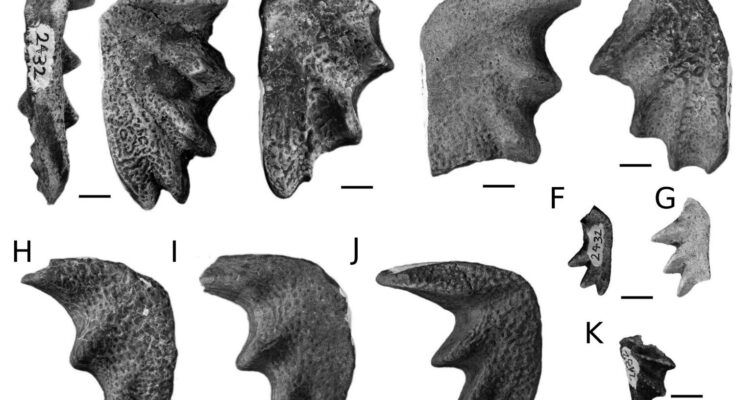A newly discovered extinct lungfish, found in Zimbabwe, may reshape how we understand its more modern relative, which is also of the Ferganoceratodus genus.
Researchers studied the Ferganoceratodus edwardsi, the ancient lungfish species, and found that many lungfish may be more closely connected to each other than previously believed. This discovery sheds new light on their development over time.
A researcher’s efforts to uncover this ancient species in southern Africa have been honored, and the new species has been named after him.
The fossil lungfish Ferganoceratodus edwardsi has been named in honor of Steve Edwards, a safari guide and amateur fossil hunter in northern Zimbabwe. Steve played a key role in discovering a phytosaur, a new dinosaur, and now this fish. To recognize his significant contributions, the team of paleontologists decided to name the lungfish after him.
Professor Paul Barrett from the Natural History Museum, a co-author of the research, praised Steve Edwards, calling him a vital figure in paleontology.
Edwards has discovered several Late Triassic sites in southern Africa, a period when dinosaurs were emerging and bony fish were diversifying, Barrett said. His discoveries are helping us understand this crucial period in evolution.
Thrilled to annouce our latest Zimbabwean palaeo paper where our multinational team names a new Triassic lungfish – Ferganoceratodus edwardsi – after Steve Edwards, manager of @MusangoCamp who found the site and the key fossils. Makorokoto Steve!
pic.twitter.com/X8wTp72izH
— NHMdinolab (@NHMdinolab) July 31, 2024
Moreover, the research team plans to return to the region with Edwards in the coming years, confident that more fossils and new species await discovery. Their findings were published in the Journal of Vertebrate Paleontology.
Closest living relatives to four-limbed animals
Lungfish are a special kind of freshwater fish that have caught scientists’ attention for years. They are closely related to animals with four limbs. This connection helps scientists learn more about the ancestors of amphibians, reptiles, birds, and mammals, according to Phys.org.
Unlike most other fish, lungfish have a unique ability. They can use their swim bladders like lungs. This lets them breathe air, which is unusual for fish. However, a few species of lungfish live in Africa, South America, and Australia.
One of the most remarkable things about lungfish is that they have survived for around 420 million years. Moreover, the earliest lungfish species already had features similar to those of their modern relatives, making them easily recognizable.
Because of this long history during which they changed little, lungfish are often considered some of the best examples of “living fossils.”
“Lungfish have a fairly paradoxical fossil record,” Barrett says. “Generally, we expect there to be fewer fossils as we go back in time, but it’s the other way around for lungfish.”
He explains that most fossils come from the early stages of lungfish evolution, during which many species had well-preserved skeletons. However, during the Mesozoic Era, between 252 and 66 million years ago, we mainly find only teeth and a few skulls.




